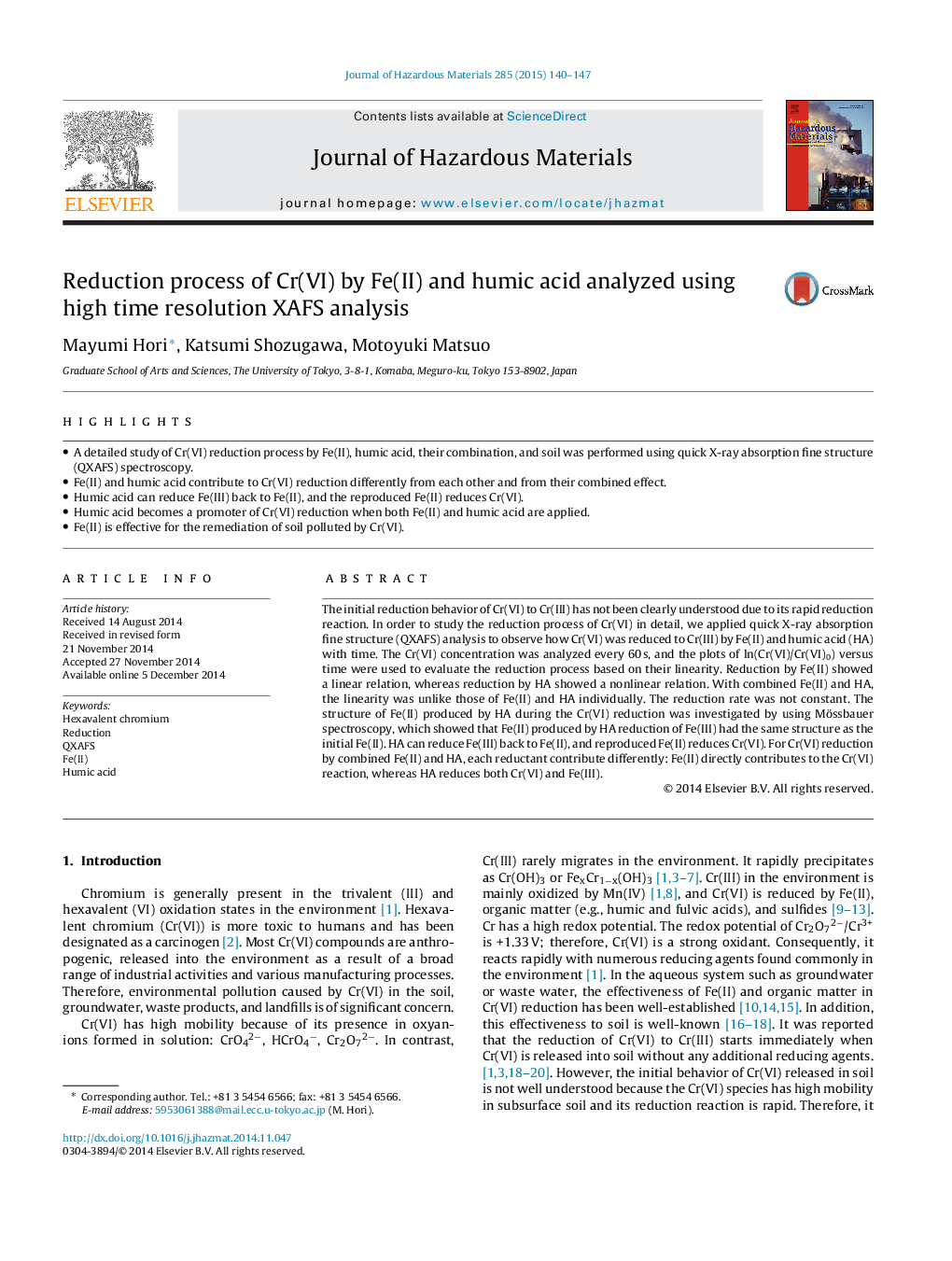| Article ID | Journal | Published Year | Pages | File Type |
|---|---|---|---|---|
| 576422 | Journal of Hazardous Materials | 2015 | 8 Pages |
Abstract
The initial reduction behavior of Cr(VI) to Cr(III) has not been clearly understood due to its rapid reduction reaction. In order to study the reduction process of Cr(VI) in detail, we applied quick X-ray absorption fine structure (QXAFS) analysis to observe how Cr(VI) was reduced to Cr(III) by Fe(II) and humic acid (HA) with time. The Cr(VI) concentration was analyzed every 60Â s, and the plots of ln(Cr(VI)/Cr(VI)0) versus time were used to evaluate the reduction process based on their linearity. Reduction by Fe(II) showed a linear relation, whereas reduction by HA showed a nonlinear relation. With combined Fe(II) and HA, the linearity was unlike those of Fe(II) and HA individually. The reduction rate was not constant. The structure of Fe(II) produced by HA during the Cr(VI) reduction was investigated by using Mössbauer spectroscopy, which showed that Fe(II) produced by HA reduction of Fe(III) had the same structure as the initial Fe(II). HA can reduce Fe(III) back to Fe(II), and reproduced Fe(II) reduces Cr(VI). For Cr(VI) reduction by combined Fe(II) and HA, each reductant contribute differently: Fe(II) directly contributes to the Cr(VI) reaction, whereas HA reduces both Cr(VI) and Fe(III).
Related Topics
Physical Sciences and Engineering
Chemical Engineering
Chemical Health and Safety
Authors
Mayumi Hori, Katsumi Shozugawa, Motoyuki Matsuo,
